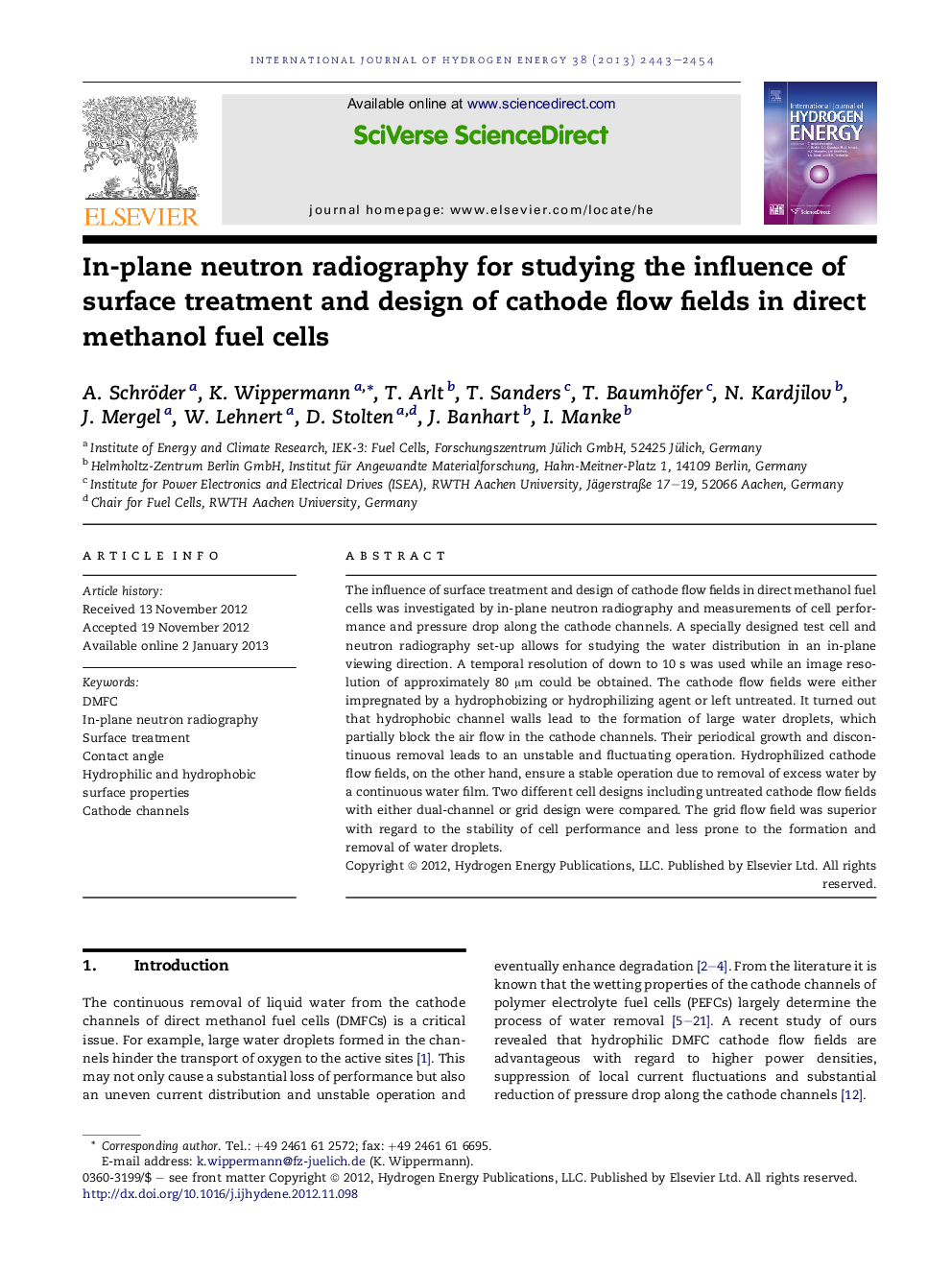| Article ID | Journal | Published Year | Pages | File Type |
|---|---|---|---|---|
| 1274110 | International Journal of Hydrogen Energy | 2013 | 12 Pages |
The influence of surface treatment and design of cathode flow fields in direct methanol fuel cells was investigated by in-plane neutron radiography and measurements of cell performance and pressure drop along the cathode channels. A specially designed test cell and neutron radiography set-up allows for studying the water distribution in an in-plane viewing direction. A temporal resolution of down to 10 s was used while an image resolution of approximately 80 μm could be obtained. The cathode flow fields were either impregnated by a hydrophobizing or hydrophilizing agent or left untreated. It turned out that hydrophobic channel walls lead to the formation of large water droplets, which partially block the air flow in the cathode channels. Their periodical growth and discontinuous removal leads to an unstable and fluctuating operation. Hydrophilized cathode flow fields, on the other hand, ensure a stable operation due to removal of excess water by a continuous water film. Two different cell designs including untreated cathode flow fields with either dual-channel or grid design were compared. The grid flow field was superior with regard to the stability of cell performance and less prone to the formation and removal of water droplets.
► In-plane visualization of water droplets in DMFC cathodes. ► Spatial/temporal resolution of about 80 μm/10 s. ► Influence of hydrophilic/-phobic properties clearly visible. ► Clear correlation of radiographic, performance and pressure drop experiments. ► Grid design of cathode flow fields provides high time stability of performance.
